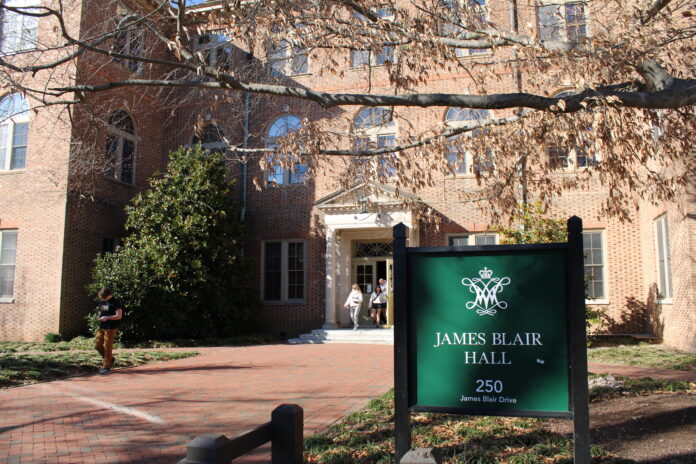Wednesday, April 16, Penn State University professor Lior Sternfeld delivered a talk titled “Being a Jew in the Islamic Republic of Iran.” The history, Judaic studies and Asian and Middle Eastern studies departments hosted the event. Sternfeld covered the topics discussed in his books “Between Iran and Zion: Jewish Histories of Twentieth-Century Iran,” published in 2018, and “Jews of Iran: A Photographic Chronicle,” published in 2022.
Sternfeld is a William J. and Charlotte K. Duddy University Endowed Fellow in the Humanities and an associate history and Jewish studies professor at Penn State. The Foreign Policy Research Institute also named him a Templeton Fellow for the Middle East Program in 2023.
The lecture started with a brief history of Jewish communities in Iran before the country’s 1979 revolution. This gave context for his broader discussion about Jewish life in Iran and the Iranian diaspora following the Islamic revolution.
“By the late 1970s, their identity had been formed as Iranian and Jewish at the same time,” Sternfeld said. “The younger generation would really feel the grievances of the entire Iranian society and participated in the revolution in many ways.”
The Iranian Revolution of 1979 overthrew the imperial state of Iran and established an Islamic republic. As a result of the new religious government, many Jews decided to migrate out of Iran.
“Iranian Jews left mostly to the US, but then also to Israel and fewer to Europe,” Sternfeld said. “In the year 2000, we had the last credible count of Iranian Jews in Iran, and the number was 35,000 out of 100,000 twenty years earlier.”
The outflow of Jews from Iran led to misinformation about the poor treatment of the remaining Jewish population in the Israeli media.
“The story was that the parliament passed a law forcing Iranian Jews to wear a yellow star,” Sternfeld said. “A few days later, the tabloid captioned an apology for publishing. There was nothing of that sort, but it spread through diaspora circles pretty rapidly.”
This caused many Israeli government officials to take action, encouraging Iranian Jews to leave Iran.
“In Israel, the reversal of the story never took place,” Sternfeld said. “This became a fact in the way that Israelis talked about Iranian Jews, this community is on the edge of another Holocaust.”
This story did not represent all of the work being done in Iran to include minority communities, like the collaboration in rewriting the constitution.
“The committee convened in order to write a new constitution for Iran,” Sternfeld said. “One of the members was Alan Dershowitz, a Jewish lawyer and political activist, that represented an interest of religious minorities in writing the constitution.”
Iranian Jews saw the positive changes being made in Iran and did not want to leave.
“Their vision was that Iran was going to be an Iranian republic, not an Islamic republic,” Sternfeld said. “It’s going to be an Iranian republic that will embrace all minorities, the religious minorities, the ethnic minorities, they will be better off by working towards the creation of this Iranian republic.”
Some Jews were also hesitant to leave because of their personal connections to Iran.
“Others just couldn’t see themselves leaving Iran under any circumstances,” Sternfeld said. “They believed that their identity, their roots, are built in the Iranian land, and they couldn’t imagine leaving Iran.”
Jewish communities have seen increasing improvements since the end of the revolution, especially under President Hassan Rouhani, who served from 2013 to 2021.
“During the presidency of Rouhani, the parliament passed a number of laws that the Jewish community has been trying to pass for many, many years,” Sternfeld said. “And this was a major victory for a community that is facing, on a regular basis, very strong pressure.”
Jewish religious spaces have also started to become shared among the Muslim community, further promoting integration.
“There is [a] place for women to get blessings for pregnancies and marriages,” Sternfeld said. “It served as a Jewish site for hundreds of years, but in the past 200 years or so, it became a recommended site also for Muslim women.”
Similarly, Iran is now working to recognize the minority Jewish population that was previously left out of the remembrance of the Iran-Iraq war.
“In December of 2014, Iran for the first time unveiled a monument commemorating Jewish fallen soldiers from the Iran-Iraq war,” Sternfeld said. “It’s a beautiful monument, it has names of the Jewish foreign soldiers, where they served [and] where they died.”
Following his lecture, Sternfeld opened the floor for questions.
In response to a question about balancing the representation of recognized and unrecognized religious minorities in an Islamic republic, Sternfeld emphasized the importance of visibility.
“I think that there is a very long distance between the understanding of Iran and Jewish existence and the growing picture that some people tried to portray,” Sternfeld said. “But the way that you understand is to give Iranian Jews the agency, the voice.”
Iqra Ahmad ’26 reflected on the representation the discussion gave to the Jewish community in Iran.
“I really appreciated getting to learn more about it, especially because they seemed kind of an anomaly historically, and they have had such a significant role in the nation’s very recent history,” Ahmad said. “From participating in the Iran-Iraq war, they have been crucial to the state-building project.”
Bennett Snyder ’25 shared similar sentiments.
“I appreciated how it complicated how we in America think about the tensions between the Islamic world, the Islamic Republic of Iran, Judaism and Israel,” Snyder said. “There is a pretty sizable community of Jews in Iran, and like he points out, they’re choosing not to leave every single day.”

